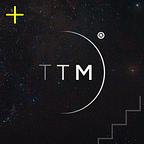Blockchain in art industry: combination of incompatibles
Art doesn’t sound like the thing that needs blockchain to sustain, does it? Nevertheless, blockchain technology is getting to this market — and we have nothing to do with that but tell you, what’s going on.
First of all, let’s decide, why it’s important to care about art. Of course, your knowledge of Rembrandt’s works will show people around that you’re an intelligent person, and seeing Mona Lisa in Louvre museum is a must for everyone, who states himself as a person, that cares for the beauty of this world. And if you’re one of those lucky that owns a fine art masterpiece — you are not only pleasing your eyes but also investing — as fine art, as good wine, becomes more expensive with time.
If you ever been curious about fine art trading, you should know that provenance (owning the history of art object) is the thing that seriously influent on the selling price. Usually, provenance is stored in the auction catalog. Usually, you don’t have many ways to check it, so you have to believe it or leave art object alone. And if there is no provenance of the art object, it’s a problem, as it could be fake, damaged or stolen. And that means it wouldn’t be easy to sell it later, so it is not a good investment.
The blockchain is the thing that can help here, with few projects that take care about provenance. Codex Labs is developing a protocol for art objects, which will keep owning and selling history in the blockchain. That will work for any art object you can buy online or offline, and that will guarantee that an object is not fake. The final goal of Codex is to make every art object have this signature as if that happens, there will be no reason to steal objects of art for a commercial purpose — as there will be no opportunity to sell it. By the way, Codex Protocol public token sale started on July 24, 2018 — if you’re interested in their coins.
Codex Protocol is going to be used by a startup called Maecenas. This project, besides provenance, are slicing (in a metaphoric way, of course) any artwork to small pieces, which are possible to buy or to sell. This feature gives the opportunity of investing in fine art even with a small amount of money, opening this market for everyone, not only for riches.
4ARTechnologies creating is a similar project with an interesting feature — a “digital fingerprint” of the artwork, stored in the blockchain. They don’t tell how that will be made but thanks to this feature everyone will be able to get artwork description and owning history just pointing a smartphone camera to the artwork.
Another important thing in the art market is an evaluation of art objects which are not yet at the market. This is usually needed during archeological excavations or in case of exploring one’s heritage from grandmother. Usually to get the price of the object you have to bring it to a special shop, which isn’t interested in telling you a real market price — to buy it from you cheaper. ViValid project gathers the community of evaluation professionals that collectively take care of the art object. You just provide the picture. they tell you a fair price, and you pay with ViValid coins. Evaluation information goes from several sources and is stored in the blockchain, and expects are responsible for what they tell — as they are paid for it.
One more kind of art I’m going to tell about is digital art — photography, video and music creation. If you ask any commercial photographer, what is the most painful thing in their work — you’ll get the same answer — working with photo stocks. There are a few problems with them:
- commissions they take are up to 80% of the price
- you have to give them copyright on the photos — so they don’t belong to you anymore
- the market is taken by few companies (Shutterstock, Getty Images etc), they keep almost same commissions and rates, and it’s almost not possible to keep them away if one is planning to earn on its photoshoots.
The solution goes from a company based in Israel and Silicon Valley called Wemark. They are developing not only a decentralized marketplace for all kinds of digital art — pictures, music and videos — but also a protocol that will help authors to keep an ownership of their creatives and with the possibility to earn money on that. The protocol will make a digital signature that would be added to an artwork. Since that time ownership history of the artwork will be transparent — and no one could use someone’s art without paying royalties for that.
So, as we see now, blockchain can help art market and creators bringing transparency to this market, and with that authors can be more secure — having more time for creation instead of carrying for copyrights. And that is good — as we will have more quality art that will become cheaper, and authors will still be paid well.
